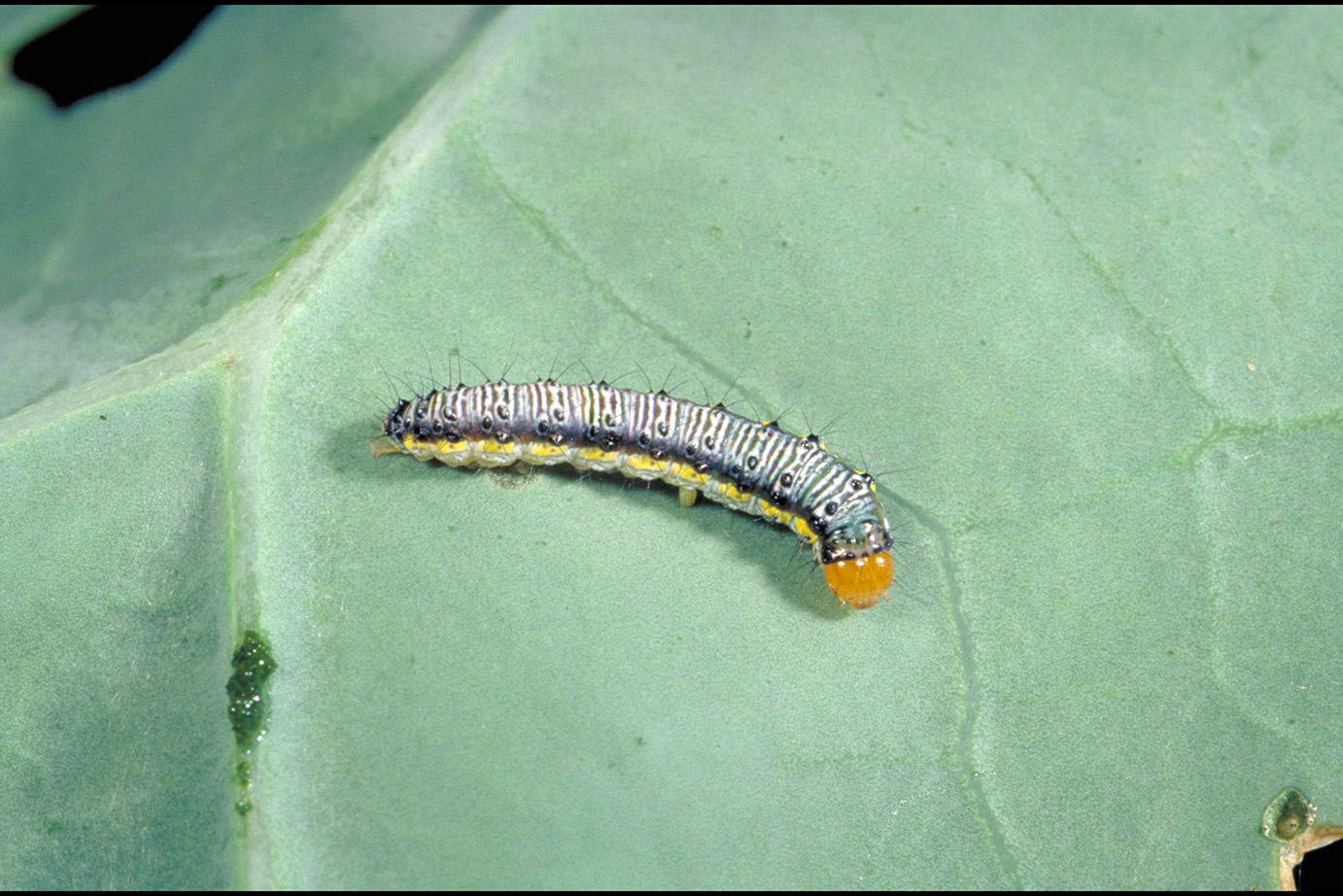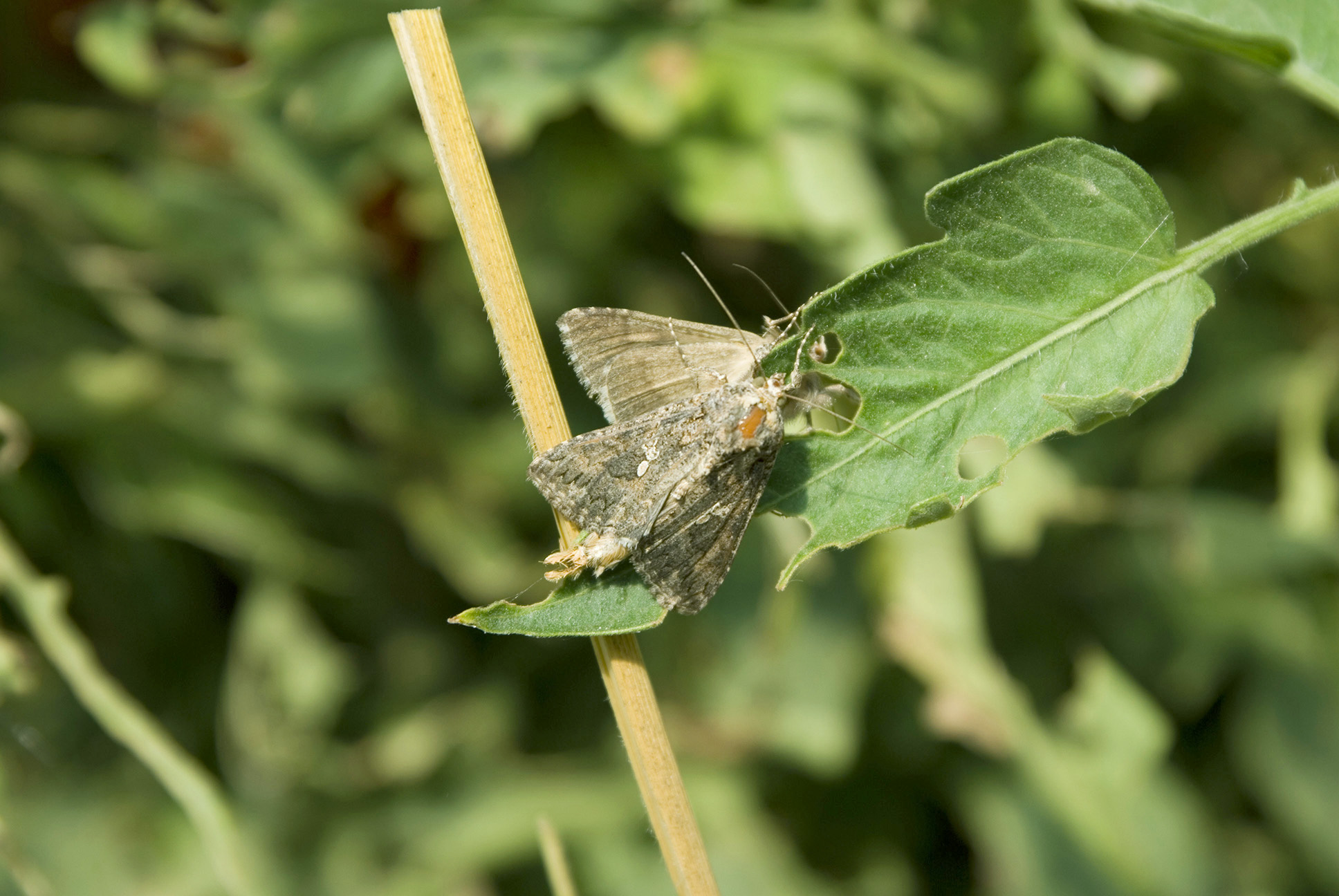Cabbage Looper
Return to insect pests
Cabbage looper (Trichoplusia ni) larvae are light green in color with a pale white stripe along each side and two thin white stripes down the back. The body is wide in the rear and tapers toward the head. There are three pairs of slender legs near the head and two pair of club-shaped prolegs toward the other end. Because the larvae have no legs in the middle area of their body, this area arches when the insect moves. When mature, the larvae reach 11⁄2 inches in length. The ridged, white, round eggs are usually laid singly on the underside of the outer leaves. The pupae are brown, about 3⁄4 inch long and wrapped in a delicate cocoon of white tangled threads. The adult moth is a mottled, grayish-brown moth with a 11⁄2 inch wing span and a small silvery spot resembling a sock in the middle of each front wing.

Cabbage looper caterpillar
(Photo: UKY Vegetable IPM Team, University of Kentucky)

Cabbage looper moth
(Photo: UKY Vegetable IPM Team, University of Kentucky)
Management:
- When scouting, examine the undersides of the lower leaves for newly hatched larvae. Pull back loose wrapper leaves and examine around the base of the head for larger larvae. Evidence of frass (excrement) at the base of the head aids in the detection of larvae.
- Because larger loopers are more difficult to control, it helps to time applications for younger larvae. Pheromone traps are available to detect adult cabbage looper presence and initiate field sampling.
